shichifukujin 七福神
ontem na minha aula de japonês, a nossa sensei distribui uns pequenos sweets que trouxe do japão. cada um tinha no saquinho um dos 7 deuses da sorte, os shichifukujin. metemos a mão dentro de um saco e tirámos um cada um.
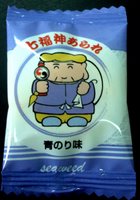 a mim calhou-me o Daikokuten (大黒天) que, de acordo com a folha explicativa que nos entregou, é o deus da cozinha, que tem um maço da sorte na mão e carrega um saco de arroz nas costas. que raio! da cozinha??? humpf! então fui investigar... e foi isto que descobri:
a mim calhou-me o Daikokuten (大黒天) que, de acordo com a folha explicativa que nos entregou, é o deus da cozinha, que tem um maço da sorte na mão e carrega um saco de arroz nas costas. que raio! da cozinha??? humpf! então fui investigar... e foi isto que descobri:
Shichifukujuin, the seven gods of good fortune. The group comprises Ebisu (恵比須), Daikokuten (大黒天), Bishamonten (毘沙門天), Benzaiten (弁財天), Fukurokuju (福禄寿), Juroujin (寿老人) and Hotei (布袋). In paintings, the seven are frequently shown riding in a treasure boat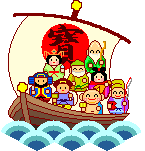 takarabune (宝船), which is an auspicious symbol, especially found during New Year celebrations. The seven deities have independant origins in Buddhism, Taoism and Shinto. Although the impetus for the grouping is uncertain, these seven auspicious deities are first believed to have been grouped together and given the name Shichifuku during the Muromachi period.
takarabune (宝船), which is an auspicious symbol, especially found during New Year celebrations. The seven deities have independant origins in Buddhism, Taoism and Shinto. Although the impetus for the grouping is uncertain, these seven auspicious deities are first believed to have been grouped together and given the name Shichifuku during the Muromachi period.
 a mim calhou-me o Daikokuten (大黒天) que, de acordo com a folha explicativa que nos entregou, é o deus da cozinha, que tem um maço da sorte na mão e carrega um saco de arroz nas costas. que raio! da cozinha??? humpf! então fui investigar... e foi isto que descobri:
a mim calhou-me o Daikokuten (大黒天) que, de acordo com a folha explicativa que nos entregou, é o deus da cozinha, que tem um maço da sorte na mão e carrega um saco de arroz nas costas. que raio! da cozinha??? humpf! então fui investigar... e foi isto que descobri:Shichifukujuin, the seven gods of good fortune. The group comprises Ebisu (恵比須), Daikokuten (大黒天), Bishamonten (毘沙門天), Benzaiten (弁財天), Fukurokuju (福禄寿), Juroujin (寿老人) and Hotei (布袋). In paintings, the seven are frequently shown riding in a treasure boat
 takarabune (宝船), which is an auspicious symbol, especially found during New Year celebrations. The seven deities have independant origins in Buddhism, Taoism and Shinto. Although the impetus for the grouping is uncertain, these seven auspicious deities are first believed to have been grouped together and given the name Shichifuku during the Muromachi period.
takarabune (宝船), which is an auspicious symbol, especially found during New Year celebrations. The seven deities have independant origins in Buddhism, Taoism and Shinto. Although the impetus for the grouping is uncertain, these seven auspicious deities are first believed to have been grouped together and given the name Shichifuku during the Muromachi period.  Daikokuten is generally famous as a god of luck. He is most familiar in Japan as a fat, smiling figure with a big sack over his left shoulder and a mallet in his right hand, standing on bales (tawara 俵) full of rice. He was particularly popular in the Edo period as one of the Shichifukujin. However, in India he was a warrior deity called Mahakala and was considered an emanation of Siva. In texts his name was transliterated as Makakara and translated as Daikokuten in the DAIHOUTOUDAIJITSUKYOU, translated in the Zui dynasty. It appears that Daikokuten came to be a protector of food supply because images of him were placed in monastery kitchens in India and in China. In Japan this practice is said to have been begun by Saichou on Mt. Hiei. The oldest extant image of Daikokuten in Japan is the late Heian wooden sculpture in Kanzeonji in Dazaifu (Fukuoka prefecture) In this, his expression is fierce. In the sculpture of Myoujuin of Kongourinji (Shiga prefecture; late Heian) he is shown in armor. Thus, his identity as a war god is still apparent. Later he became more closely associated with food and good forture. This tendancy was reinforced by his identification with the Shinto deity Ookuninushino Mikoto. He is variously considered to be the god of wealth (or more specifically, the harvest), or of the household (particularly the kitchen). He is recognised by his wide face, smile, and flat black hat. He is often portrayed holding a golden mallet, seated on bales of rice, with mice nearby (Mice signify plentiful food).
Daikokuten is generally famous as a god of luck. He is most familiar in Japan as a fat, smiling figure with a big sack over his left shoulder and a mallet in his right hand, standing on bales (tawara 俵) full of rice. He was particularly popular in the Edo period as one of the Shichifukujin. However, in India he was a warrior deity called Mahakala and was considered an emanation of Siva. In texts his name was transliterated as Makakara and translated as Daikokuten in the DAIHOUTOUDAIJITSUKYOU, translated in the Zui dynasty. It appears that Daikokuten came to be a protector of food supply because images of him were placed in monastery kitchens in India and in China. In Japan this practice is said to have been begun by Saichou on Mt. Hiei. The oldest extant image of Daikokuten in Japan is the late Heian wooden sculpture in Kanzeonji in Dazaifu (Fukuoka prefecture) In this, his expression is fierce. In the sculpture of Myoujuin of Kongourinji (Shiga prefecture; late Heian) he is shown in armor. Thus, his identity as a war god is still apparent. Later he became more closely associated with food and good forture. This tendancy was reinforced by his identification with the Shinto deity Ookuninushino Mikoto. He is variously considered to be the god of wealth (or more specifically, the harvest), or of the household (particularly the kitchen). He is recognised by his wide face, smile, and flat black hat. He is often portrayed holding a golden mallet, seated on bales of rice, with mice nearby (Mice signify plentiful food). 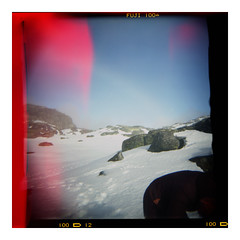

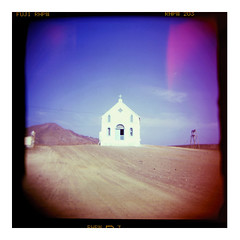
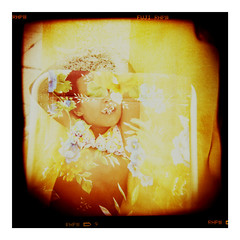

 lomo
lomo




Enviar um comentário
<< Home